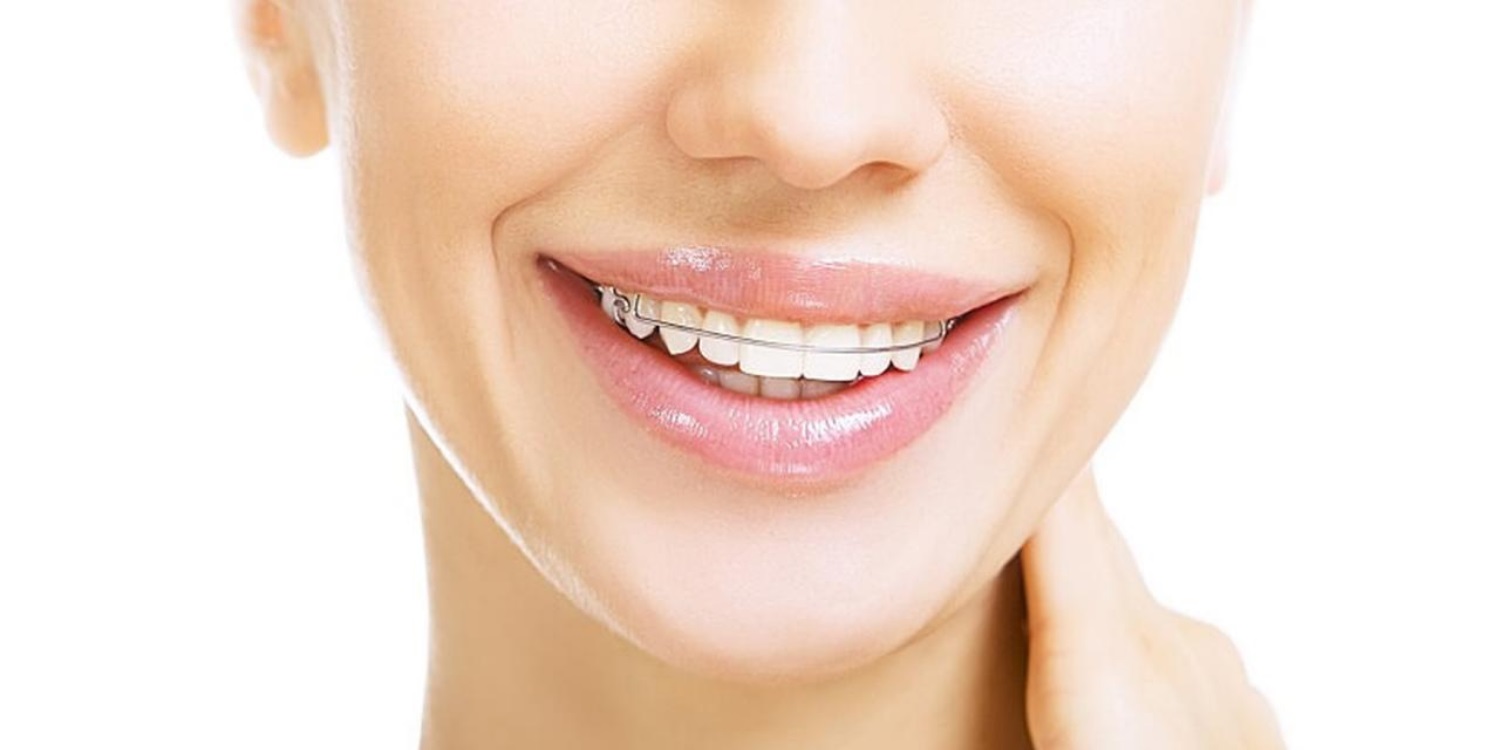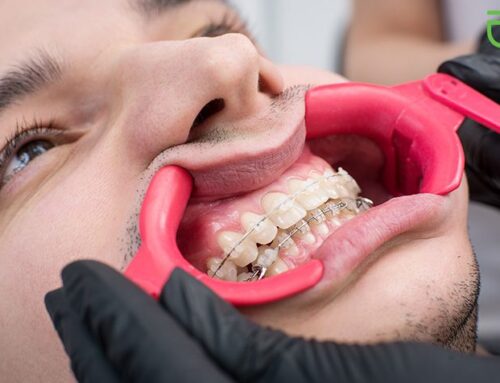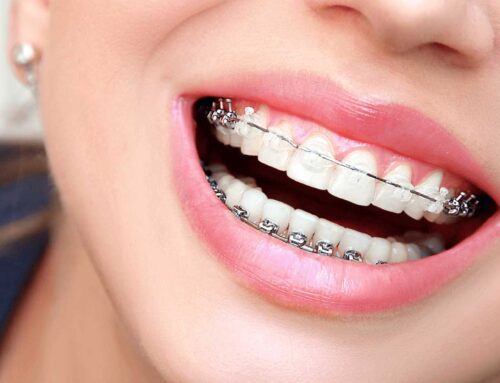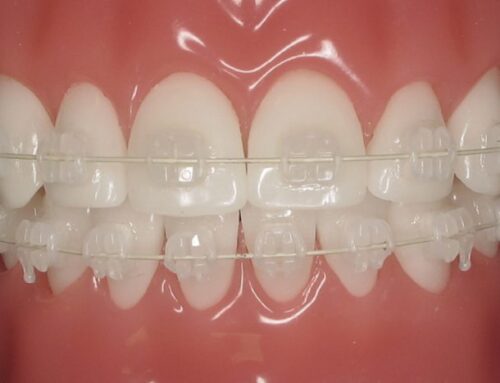Keep Teeth Straight After Braces with Permanent Retainers
When someone makes the commitment to undergo orthodontic treatment, they want to make sure they get the best possible results from the process. For some patients, this may include the orthodontist providing the patient with some type of retainer to be worn after the braces come off to maintain the optimum position of the teeth in the jaw. In many cases, this is done through the application of a permanent dental retainer.
Have you ever given any thought to what your smile would look like if your teeth were a little bit straighter? It’s perfectly normal to have one or more teeth that aren’t as aligned as we might want them to be, but that doesn’t mean we can’t take steps to improve things. This might be done simply because we want to have a better looking smile, or perhaps a dentist has recommended orthodontic treatment to correct a dental health issue, or prevent one from occurring in the future. Regardless of the specific reason, the outcome is essentially the same; straighter teeth and a great looking smile!
There are multiple different styles of braces that people can choose from, each with their own unique set of advantages to meet the needs of specific patient cases. Metal braces remain the most common style of braces due to their versatility, low cost, and simplicity. However, patients may also be able to select ceramic braces if they prefer a more subtle visual appearance, fast braces if they are eager to get results in less time, or Invisalign clear plastic aligners if they are looking for optimum comfort and convenience. Whatever particular style of braces a person ends up getting, it’s important to understand how they work to move the teeth, because this also helps to explain why dental retainers are often necessary to be worn after the braces come off.
How Do Braces Work to Straighten Teeth?
There are two things teeth need in order to shift position within the jaw; pressure and time. We see the results of this as we age, as the pressure of emerging teeth and the gradual expansion of the growing jawbones cause teeth to move in various directions. Some teeth rotate, some teeth angle outward, some teeth angle inward, some teeth overlap, etc. This continues throughout the teenage years as the last remaining baby teeth fall out and the person obtains their full set of adult teeth. The emergence of wisdom teeth in the later teenage years also causes shifts in the positions of teeth, often necessitating the extraction of wisdom teeth simply because there’s not enough space in the jaw to accommodate them.
After the final adult teeth have appeared, you might think that things would settle down and the movement of the teeth would stop. This is not the case, as there is continual pressure exerted on the teeth as we go about our normal lives. Talking, chewing, jaw clenching, and tooth grinding are all sources of pressure in the mouth that can cause teeth to shift and move even after the final adult teeth have grown in.
Braces work to correct the position and alignment of the teeth in the jaw by exerting a steady, constant pressure in a precise pattern in order to guide the teeth to their optimum positions. The brackets which are affixed directly to the teeth are used to hold a metal wire in place that is specially shaped in order to pull or push teeth in the desired direction. At regular intervals, these wires are replaced with new versions that continue the process of moving the teeth towards their final optimum alignment.
Orthodontic treatment usually takes between 12-24 months for most patients, however some may have longer treatments, while others have shorter depending on the individual needs of the patient. Adjustments are typically done on a monthly basis where the wires are replaced and progress is monitored. If any changes to the treatment plan are needed, the orthodontist will make recommendations at this time in order to ensure that the patient gets the best possible results.
Patients who are undergoing treatment using Invisalign invisible braces have a bit of a different experience, as the clear plastic aligners do not rely on metal brackets or wires to exert pressure on the teeth. With Invisalign, a series of progressive custom-fitted plastic aligners are worn over the teeth that exert a similar type of pressure on the teeth to encourage movement to the desired positions. These aligners can be removed and replaced by the patient, making eating and oral care easier and more convenient. At two-week intervals, the patient simply progresses to the next set of aligners in the sequence, continuing the progress of the treatment until each set of aligners has been worn and the teeth arrive at their final optimum positions.
What Happens After Braces Are Taken Off the Teeth?
At the conclusion of the orthodontic treatment plan, the metal wires and brackets are removed from the teeth, and patients can now enjoy their beautiful new smile! However, just because the braces come off, it doesn’t mean that there is no longer any pressure exerted on the teeth. As we mentioned earlier, there are many ways that pressure is exerted on our teeth through activities like eating or speaking, as well as when we sleep through tooth clenching or grinding. Day after day, no matter what, small amounts of pressure are applied to the teeth.
With the braces gone, there’s nothing in place to counteract these sources of pressure, and the teeth often start to drift away from their optimum alignment over time. This effect is more pronounced in some patients than others. Some people may have such a slight or gradual amount of drift that the concern is minimal. Unfortunately, for some patients the post-braces tooth shift can be significant enough to necessitate corrective action if left unchecked. This might even mean needing braces again several years in the future. Naturally, this isn’t something most people want to have to deal with, so prevention is important.
How Can Gradual Tooth Movement Be Prevented?
There’s really only one way to prevent gradual tooth movement; the pressure created through our normal daily activities needs to be counteracted. To do this, dentists and orthodontists will recommend that the patient be fitted with a retainer that is worn on the teeth to negate the detrimental effects of pressure on the teeth and keep them in place. Retainers come in several different styles, depending on the needs of the patient and the potential risks of tooth misalignment as determined by the orthodontist or dentist.
Retainers can either be removable or permanently affixed to the teeth. Although different in appearance and design, the main purpose of both permanent and removable retainers is the same in that they work to ‘retain’ teeth in their desired locations and prevent movement over time. Let’s take a closer look at each type of retainer.
Permanent Retainers vs. Removable Retainers
 Permanent retainers are thin, stainless steel metal wires that are bonded to the inner surface of the bottom-front incisor teeth. Most permanent retainers span across the backside of the front 4 or 6 teeth, as this amount of reinforcement is usually sufficient to counteract any negative pressure that may be exerted on the teeth. The wire itself is affixed at either end directly to the teeth using a super-strong dental bonding adhesive.
Permanent retainers are thin, stainless steel metal wires that are bonded to the inner surface of the bottom-front incisor teeth. Most permanent retainers span across the backside of the front 4 or 6 teeth, as this amount of reinforcement is usually sufficient to counteract any negative pressure that may be exerted on the teeth. The wire itself is affixed at either end directly to the teeth using a super-strong dental bonding adhesive.
Permanent dental retainers have several advantages for patients. First and foremost, permanent retainers have the benefit of always being in place, meaning the patient doesn’t need to remember to wear it or run the risk of misplacing or losing the retainer. Permanent retainers are also very subtle in appearance, as they sit on the inner side of the teeth and are therefore not visible to others while speaking or smiling. Permanent retainers provide the patient with greater assurance against gradual tooth shift, and require fewer follow-up appointments to monitor progress after the orthodontic treatment has concluded.
Although permanent retainers have these advantages, there are other factors to consider to ensure that they continue to work properly over the long term. For example, since a permanent retainer cannot be removed, extra care must be taken to keep it clean and maintain a good state of dental health. The portion of the retainer wire in between the bonded ends sits slightly off of the surface of the teeth, allowing the patient to clean in between the wire and the teeth using dental floss or interdental picks. If the patient is not diligent in their oral care habits, this can be a prime location for plaque and tartar to build up. If left untreated, this can progress to other conditions such as gum inflammation, tooth decay, or even periodontitis.
Removable retainers have their own set of pros and cons to consider as well. In either case, since they can be removed and replaced at any time by the patient, removable retainers make eating, drinking, and performing their typical dental cleaning routine more convenient and comfortable. This also makes cleaning the retainer itself easier, as the patient can take it out to wash it.
On the other hand, removable retainers could possibly get misplaced or lost, which means that the patient may go several days or even weeks before they are able to obtain a replacement. The longer the patient waits to obtain a replacement retainer, the more they risk the teeth shifting. Removable retainers are also more fragile than permanent bonded retainers, meaning they could become damaged or broken if not handled with care.
Keeping Your Teeth Perfectly Aligned with Permanent or Removable Retainers
The final decision on what type of dental retainer is best for you will come from having an open and honest discussion with your dentist or orthodontist during the course of your treatment. It’s usually best to have this decision made prior to the conclusion of your orthodontic treatment in order to ensure everyone involved is on the same page and you are fully informed on what to expect. To this end, we will be glad to schedule an introductory appointment with you to answer any questions you may have. It’s our goal to get you started down the right path with an orthodontic treatment plan that is customized just for you.
Contact us today for your no-obligation braces consultation, and find out how we can get your smile in style!
Appointment Request
If you’re interested in any of our procedures, and would like to meet with one of our dentists to discuss options, costs and get additional information, complete this short form and we’ll give you a call to arrange for a no-obligation appointment at our Barrie clinic.










